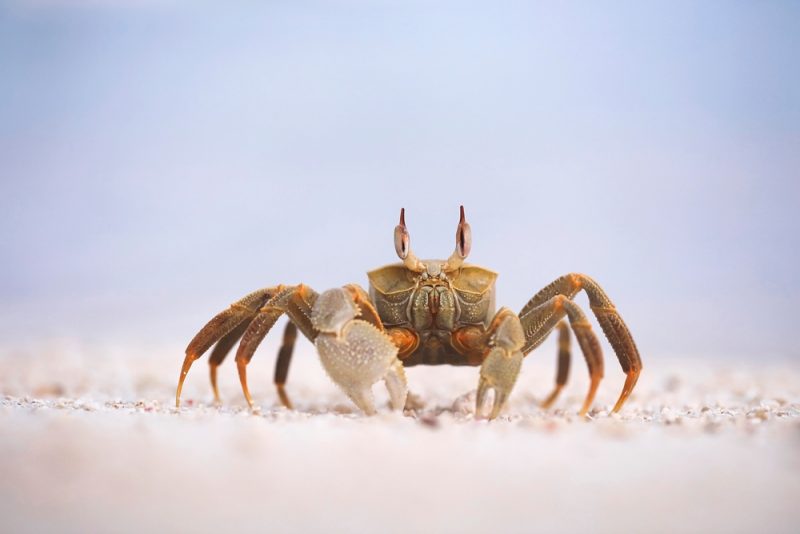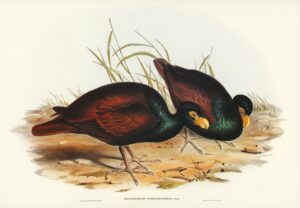A passion for the natural world drives many of our adventures. And when we’re not outside, we love delving into discoveries about the places we live and travel. Here are some of the best natural history links we’ve found this week.
Recycled shellfish
Making renewable batteries from crab and lobster shells: The chemicals currently used in batteries, such as lithium, can take thousands of years to break down. Crustacean shells contain chitin, which makes their shells hard. Restaurants around the world throw away crab and lobster shells, but scientists have discovered that discarded shells have a potential use.
Adding acetic acid to the chitin forms a gel membrane that can produce electrolytes for batteries. Such batteries would be safer and more sustainable.
“Both biodegradability of material…and the performance of the batteries are important for a product, which has the potential to be commercialized,” material scientist Liangbing Hu explained.
Chasing cyclones
Climate scientists chase arctic storms: Scientists are flying a small aircraft through arctic cyclones in northern Norway to see how storms interact with sea ice.
Cyclones affect sea ice, but the temperature, roughness, and movement of the ice also impact storms. “This interaction is probably the weakest link in our forecasting models of arctic weather and climate,” says meteorologist John Methven.
The ice is too thin to support a weather station, but with human activity in the area increasing, we need more accurate forecasts. To gather data, the flights have to take place less than 100m above the sea ice.

Wild donkeys in the desert. Photo: Shutterstock
Invasive donkeys
Cougars are killing feral donkeys in Death Valley: Across the Mojave and Sonoran Deserts, herds of feral donkeys search for water. As they wander, they trample through vegetation that other species rely on. This has caused dramatic shifts in local plant life.
The National Park Service has declared the donkeys an invasive species, but footage from cameras left in place shows that cougars will track and kill donkeys across wetlands in Death Valley. (Yes, Death Valley does have wet areas.)
Scientists studied the predator-prey interaction in 14 different wetlands and observed cougars killing donkeys in eight of them. After the killings, other donkeys avoided these areas.
Fossil could be a rare complete dinosaur: A dinosaur fossil unearthed in Canada could be a complete skeleton. The fossil is sticking out of the side of a hill in Dinosaur Provincial Park, Alberta.
The bones belong to a hadrosaur, a large, plant-eating, duck-billed species. The visible parts are complete and even include fossilized skin. The way it is sitting in the rock suggests that the entire skeleton may lie beneath.
Entire skeletons are incredibly rare. This one was discovered in 2021. Paleontologists hope to fully excavate the skeleton over the next two field seasons. The size of the fossil suggests it is a juvenile, which is even rarer. Adult hadrosaur fossils are much more common. The fossilized skin would also give them a good idea of what the dinosaurs looked like.
A cure for the blues?
Visiting canals and rivers can boost mood: Going to a river or canal when you are feeling down can cheer you up, according to new research. The combination of blue and green space with wildlife has a greater effect than green space alone.
We’ve long known that the outdoors is good for mental well-being, but this study suggests that being near water can also help. The data held up across different ages, genders, and different mental health conditions.

Lucas the African penguin now wears orthotic footwear. Photo: San Diego Zoo Wildlife Alliance
Bumblefoot workaround
Penguin gets custom-made orthotics: Keepers at the San Diego Zoo have made a penguin a pair of orthopedic boots. Lucas, an African penguin, has bumblefoot.
Bumblefoot causes redness and inflammation in birds’ feet. Lucas developed the condition following a spinal infection three years ago. It led to muscle weakness in his legs and an inability to stand properly. Rather than stand on his toes, he sits back on his ankles. This caused lots of sores on his feet and legs.
“The boots are cushioned and velcroed in place. They will help Lucas to fully participate in the colony and showcase behaviors that are more typical for a penguin, such as climbing the rocks, swimming, nesting, and finding a suitable mate,” veterinarian Beth Bicknese said.






